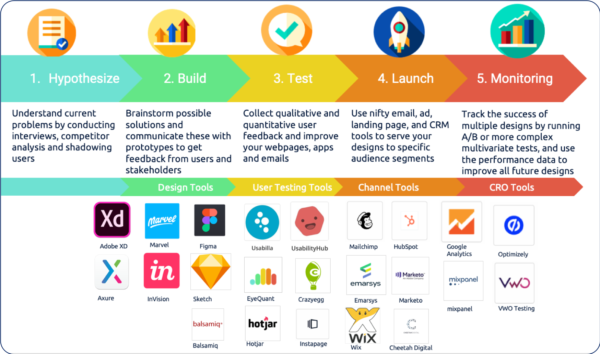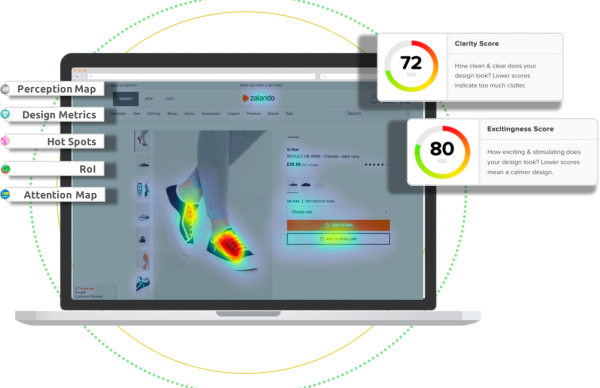We value your privacy
This website uses cookies to ensure you get the best experience on our website.
 Skip to main content
Skip to main content
This website uses cookies to ensure you get the best experience on our website.
Towards the end of 2019, we interviewed our clients to understand their biggest challenges and how they were using EyeQuant to solve the most difficult UX pain points. We regularly conduct these interviews to glean valuable insight into what to build next. Consequently, not only do we now have a very long backlog of new exciting features to develop for our lovely customers, but the interviews themselves have helped shed light on the other tools used by leading UX, product and marketing teams around the world.
We took the key findings from the interviews and created the below diagram. The diagram brings to life just how complex the design process has become. Whilst design methodologies (such as Design Thinking, Agile Design, System Thinking, etc) may be well established, it seems the number of design and testing tools now available is becoming dizzying. Nonetheless, here are our customers’ favourite tools accompanied with an explanation of how and when they’re used throughout the design process:

It’s a really exciting space to be operating in. One of the main takeaways is that user data is creeping into the earlier stages of the design process, namely the ‘design’ and ‘build’ phases. Whilst the experts responsible for the ‘monitoring’ stage of the process all have a plethora of data at their finger tips, the design & build stage is yet to really have any concrete data to help inform their design decisions. And that’s where tools such as EyeQuant come in. By connecting unique insight into where users are looking – designers and developers can gather insight within seconds, optimising their designs before they’re even live for the ultimate digital experience.



Check out our latest top tips on how you can use EyeQuant to spy on your competitors, analyse mobile...
Read more
In our latest blog we explore how to use neuroscience to help create higher performing digital products.
Read more
Figma is the go-to prototyping platform for many UX and web designers – and not without reason. Its functionality,...
Read more